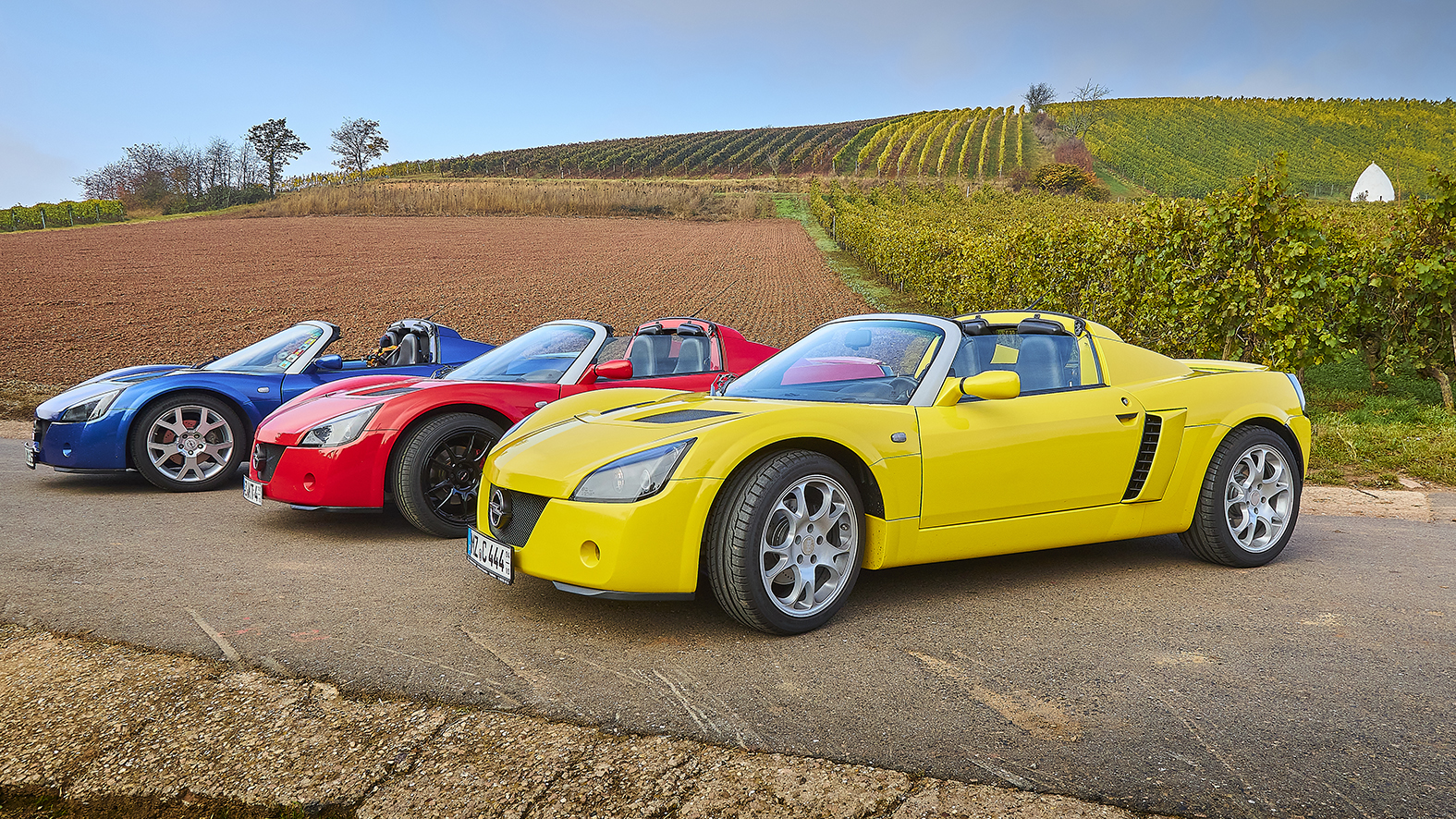An Opel Speedster only needs the most vital thing: love. That’s what the official sales brochure said at the time. 7,207 units were built. How many of them have made it to the present day? We can only speculate about that. Many have simply “left the road”. One of them already at the press launch 20 years ago. It is not easy to handle – especially in the rain, you have to drive the mid-engine sports car with caution. Apart from ABS, there are no assistance systems on board. Instead: go-kart feeling that is second to none. Purist driving.
Everyone gets in – somehow
Before setting off, the 1.11-metre-high Opel minimalist demands maximum agility and skill. To get into the cockpit, which is at knee height, a large side skirt has to be overcome. If you find getting in tricky enough, you’ll be in for a big surprise when you want to get out. Insider tip: practise when no one’s looking, then you’ll get it right in front of the ice cream parlour.
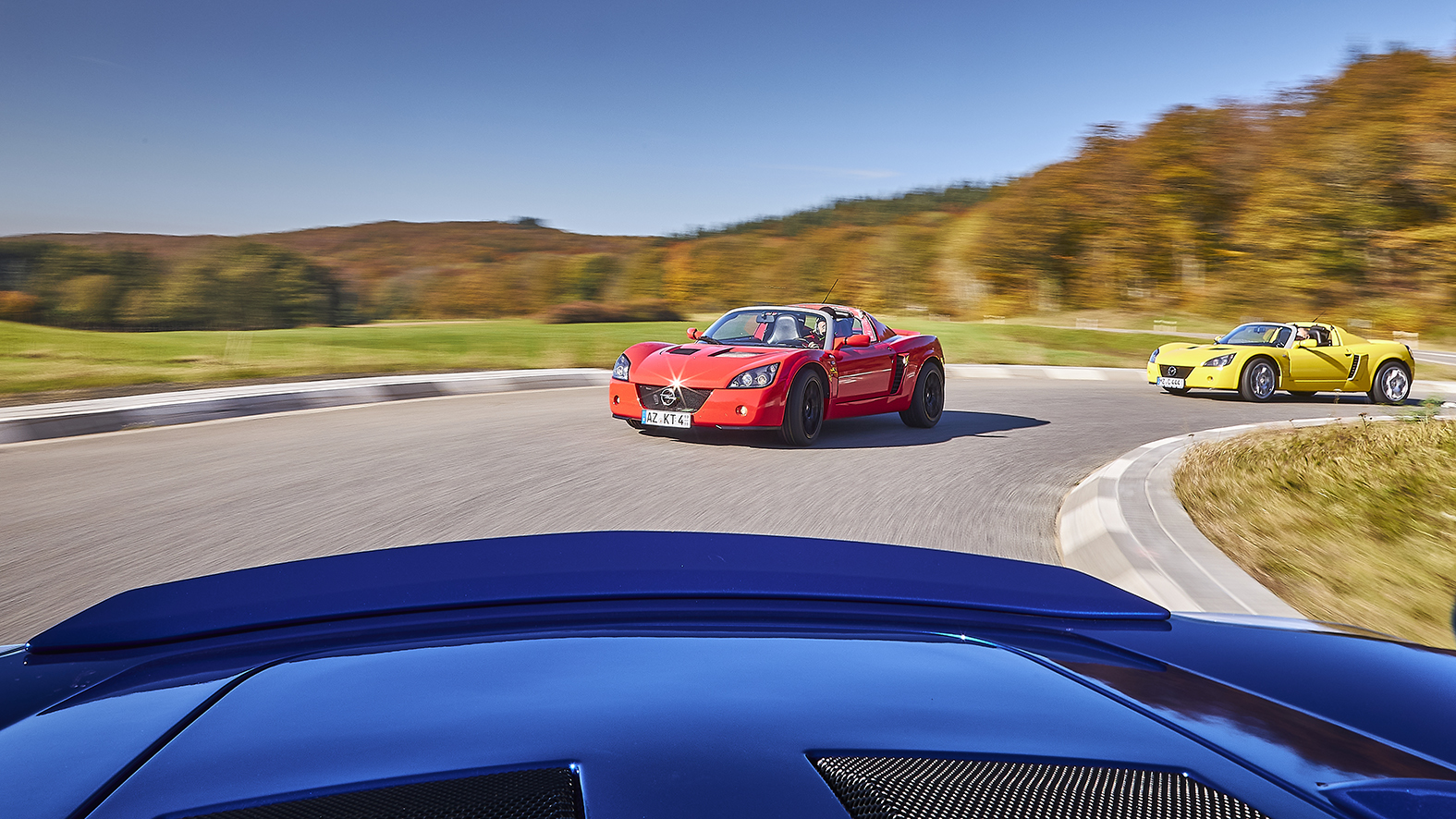
Once you’ve made it in, the roadster delights with unusual perspectives. On kerbs. Kneecaps. Terriers. The world’s smallest airbag steering wheel at the time is snug and comfortable to hold and leaves no room for doubt: this sporty car wants to tackle bends. But before the first bend, the master of the serpentines has a set starting procedure. The ignition key is in its usual place on the right of the steering column and can also be turned as usual. But that’s where the routine ends. The engine cannot be started this way. Even though the sporty, simple instrument panel reveals that the ignition is on.
The fuel gauge consists of 6 bars. Each bar represents exactly 6 litres.
The fuel gauge is also simple. It consists of just 6 bars. Each one stands for exactly 6 litres. After 36 litres, that’s it. That’s all the tank can hold. This is due to the consistent lightweight construction. The frame, for example, consists of an aluminium tub fitted with struts. The roadster weighs between 870 and 930 kilogrammes, depending on the equipment and engine variant. In the case of the latter, from 2003 onwards there was a choice between the 2.2-litre naturally aspirated engine with 147 hp and a 2.0-litre turbo engine with a lively 200 hp. Both units easily delivered superb power and accelerated the naturally aspirated model to 100 km/h in 5.9 seconds and the turbo in 4.9 seconds. Top speed is 243 km/h (217 km/h for the naturally aspirated model).
But how do you start the engine? By pressing the centrally located button on the instrument panel. So that settles that, too. It reverberates from the middle of the car. And it is precisely this position of the engine that makes the decisive difference in terms of weight distribution between the front and rear axles and balance.
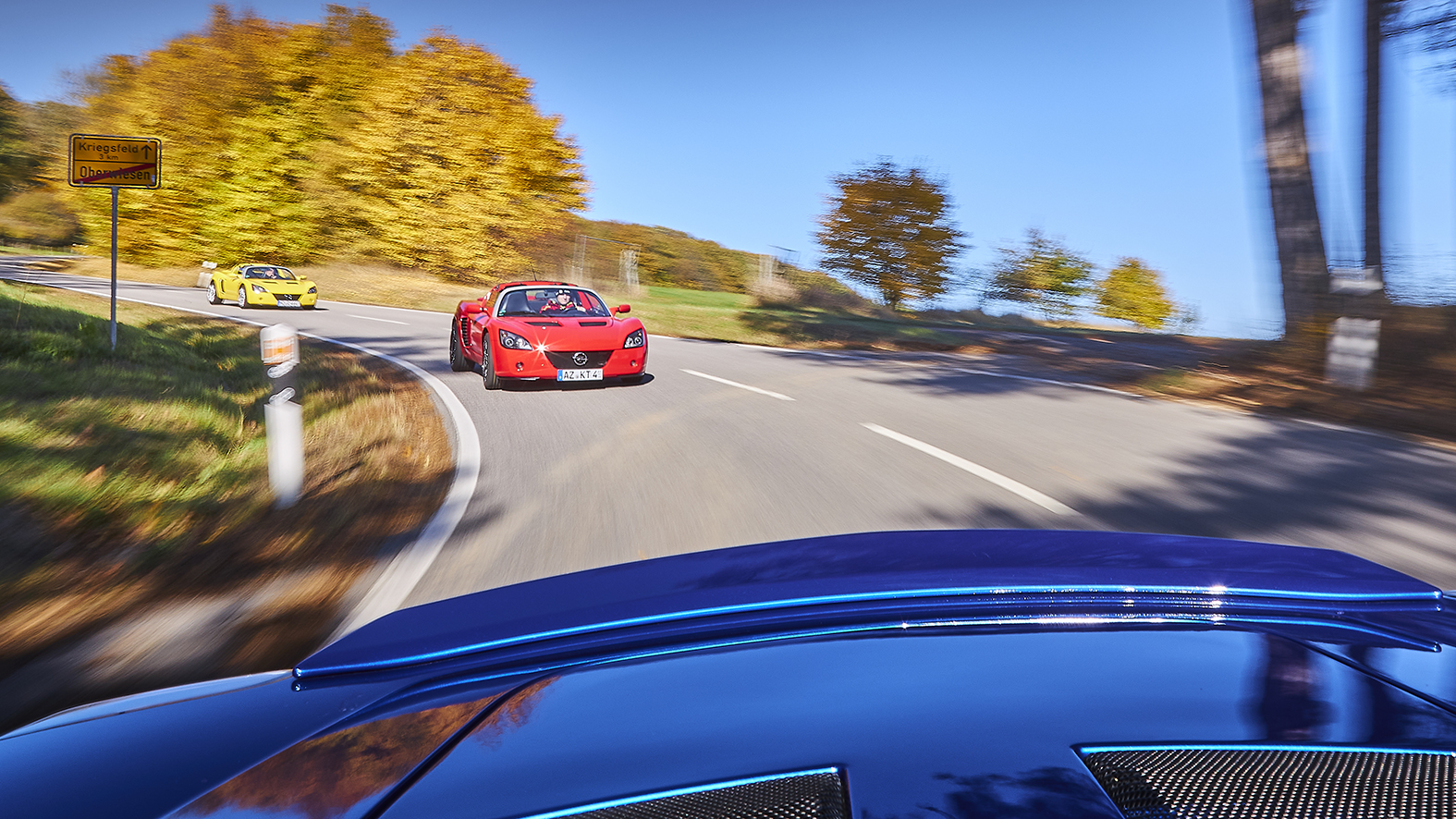
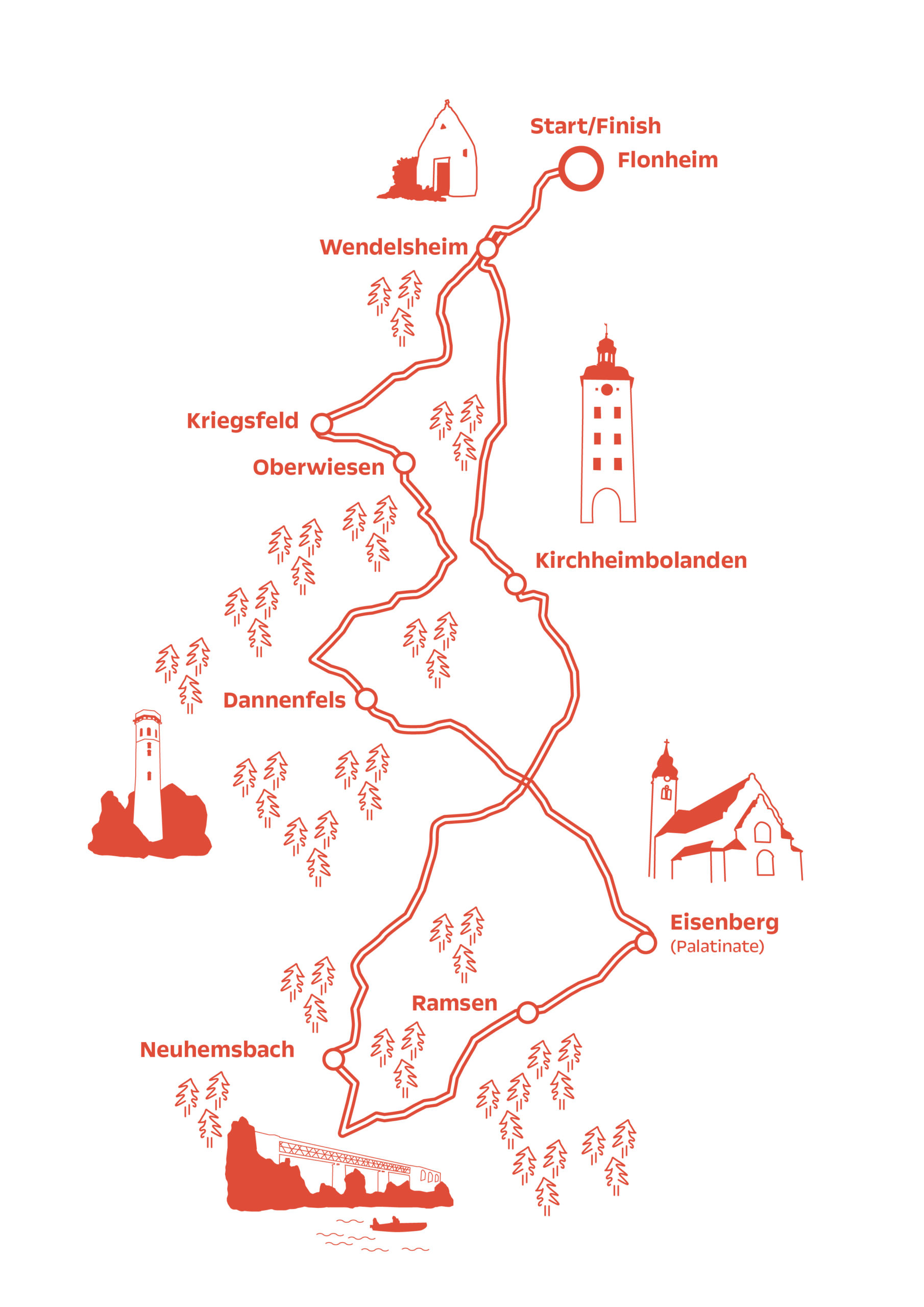
Our tour tip in the heart of Rhine-Hessen: 100 kilometres peppered with bends and serpentines.
We have found our centre
The Speedster was built in Hethel, not far from Norwich in England, in the hallowed halls of Lotus. This is also where the Lotus Omega was built, which we still remember as the fastest production limousine in the world. Opel aficionados know this, of course. The Speedster’s genes lie in its lightweight construction and low centre of gravity. The roadster is in its element on the winding country roads and serpentines.
We have chosen a route in the heart of Rhine-Hessen. The starting point is Flonheim. There are plenty of bends here. On top of that, there are gentle hills and beautiful views. Less than 15 minutes north of the Kaiserslautern factory is the densely wooded area that was annexed by the Kingdom of Bavaria in 1816. In 1956, the population voted in a referendum against reintegration into Bavaria and to remain in the federal state of Rhineland-Palatinate.
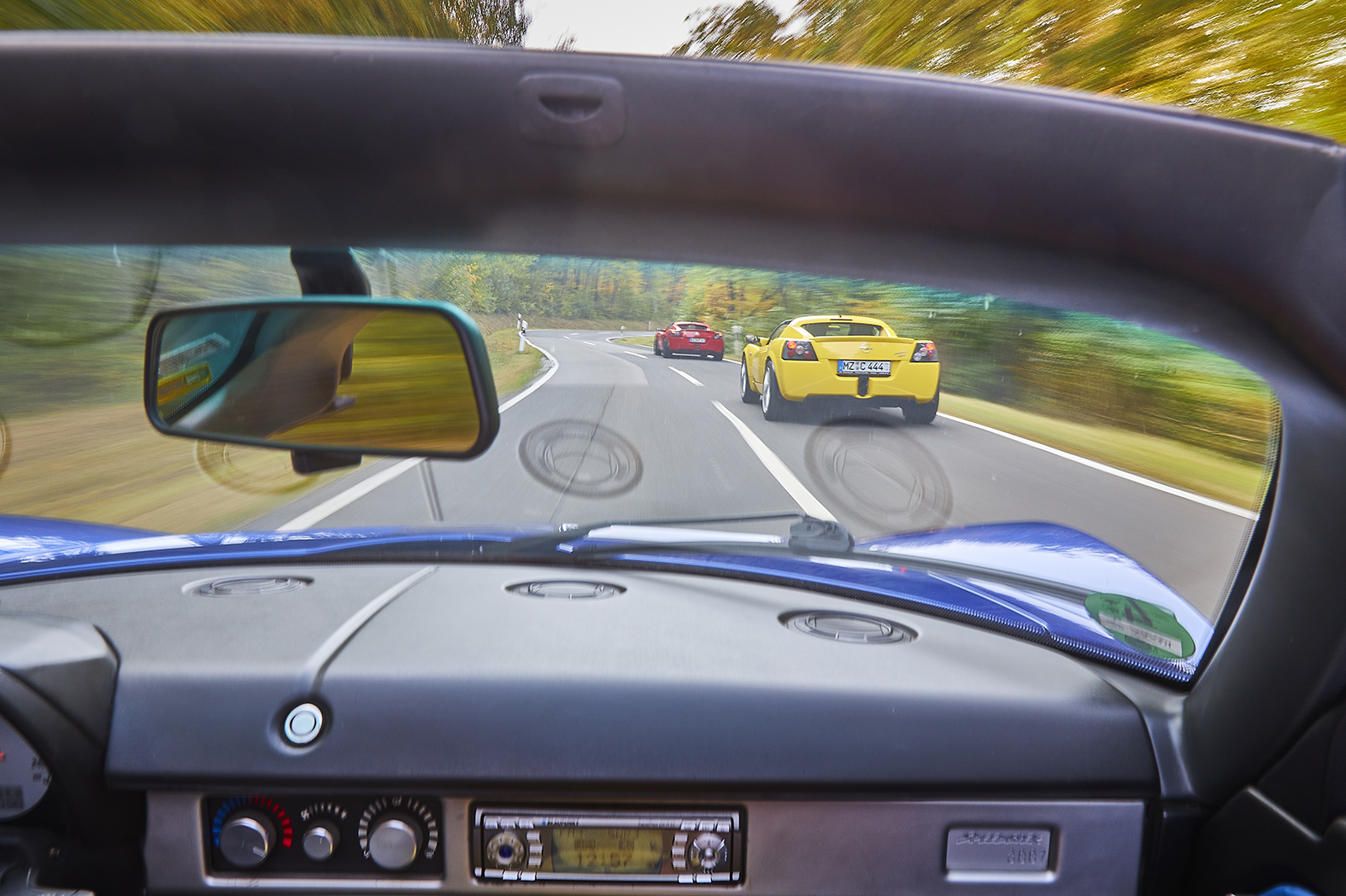
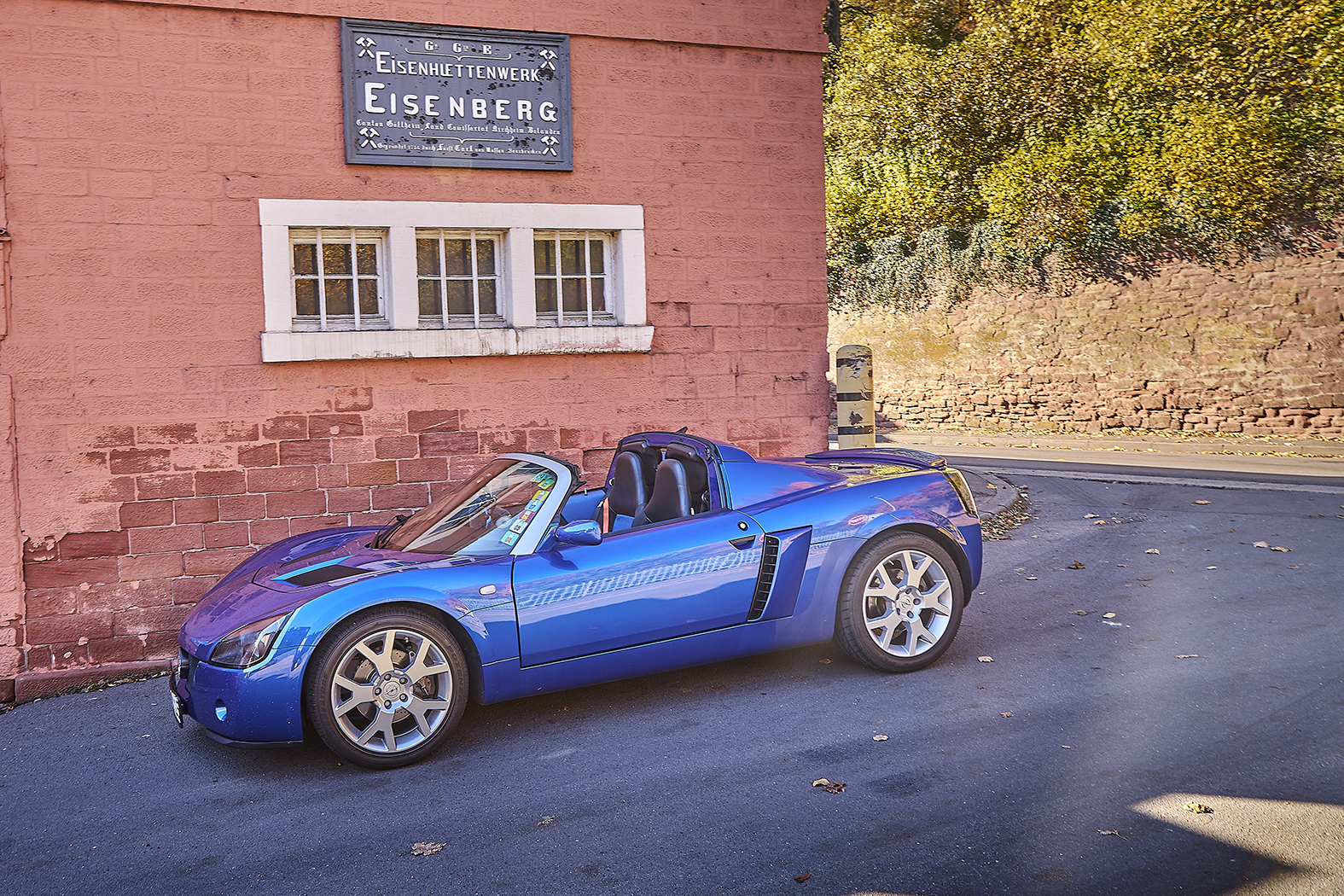
Churches with onion domes in the region still remind us of the Bavarian roots. Unique are the round shelter houses in the vineyards, called trulli, which can only be found in Rhine-Hessen. They originate from Alberobello, a small town in Apulia not far from Bari. You can find out how they came to Rhine-Hessen, of all places, by hiking one of nine “Hiwweltouren” (Rhine-Hessian for hill tours), which were created by the German Hiking Association and the German Hiking Institute. The tours are highly recommended if you want to take a break and practice getting in and out of the Speedster during your drive.
Christian Krauß in the yellow Speedster and Thorsten Stamm in the red one focus on the main attraction today – driving. Both have been enthusiastic Speedster owners from the very beginning and know exactly what they have in their rare vehicles: a thoroughbred sports car with solid Opel technology. They both love to be on the road in their sports cars. And because the roadster came onto the market 20 years ago, it can already be seen as a classic youngtimer. Prices on the market are still moderate, but with a clear upward trend. Maybe now is the right time to buy one? In any case, we have already found the perfect route for lots of driving fun.
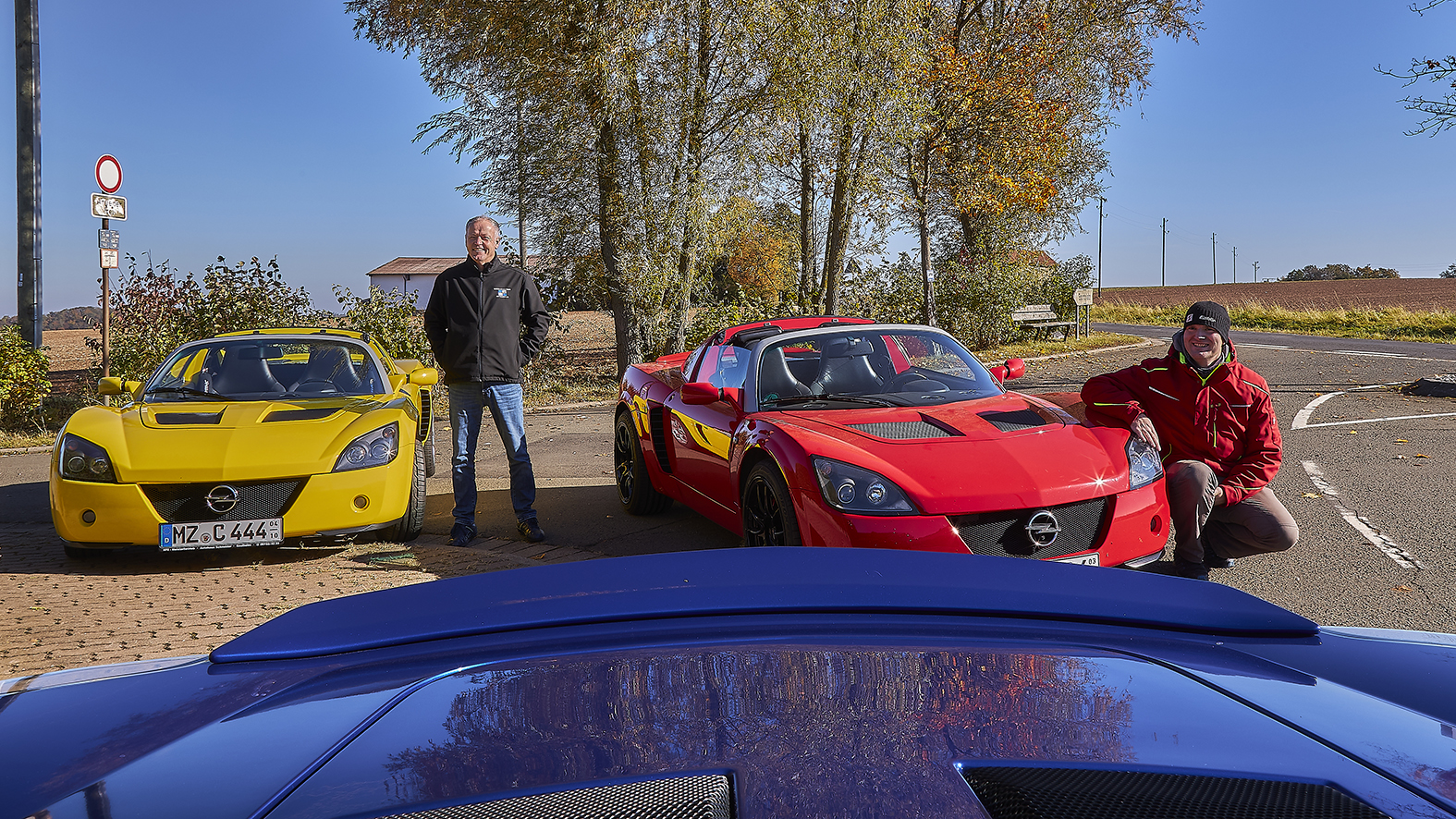
November 2021
